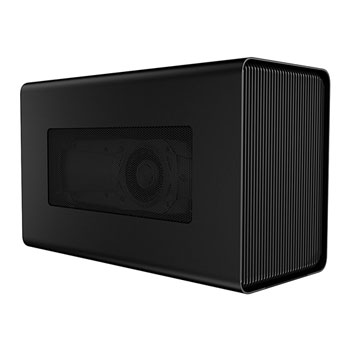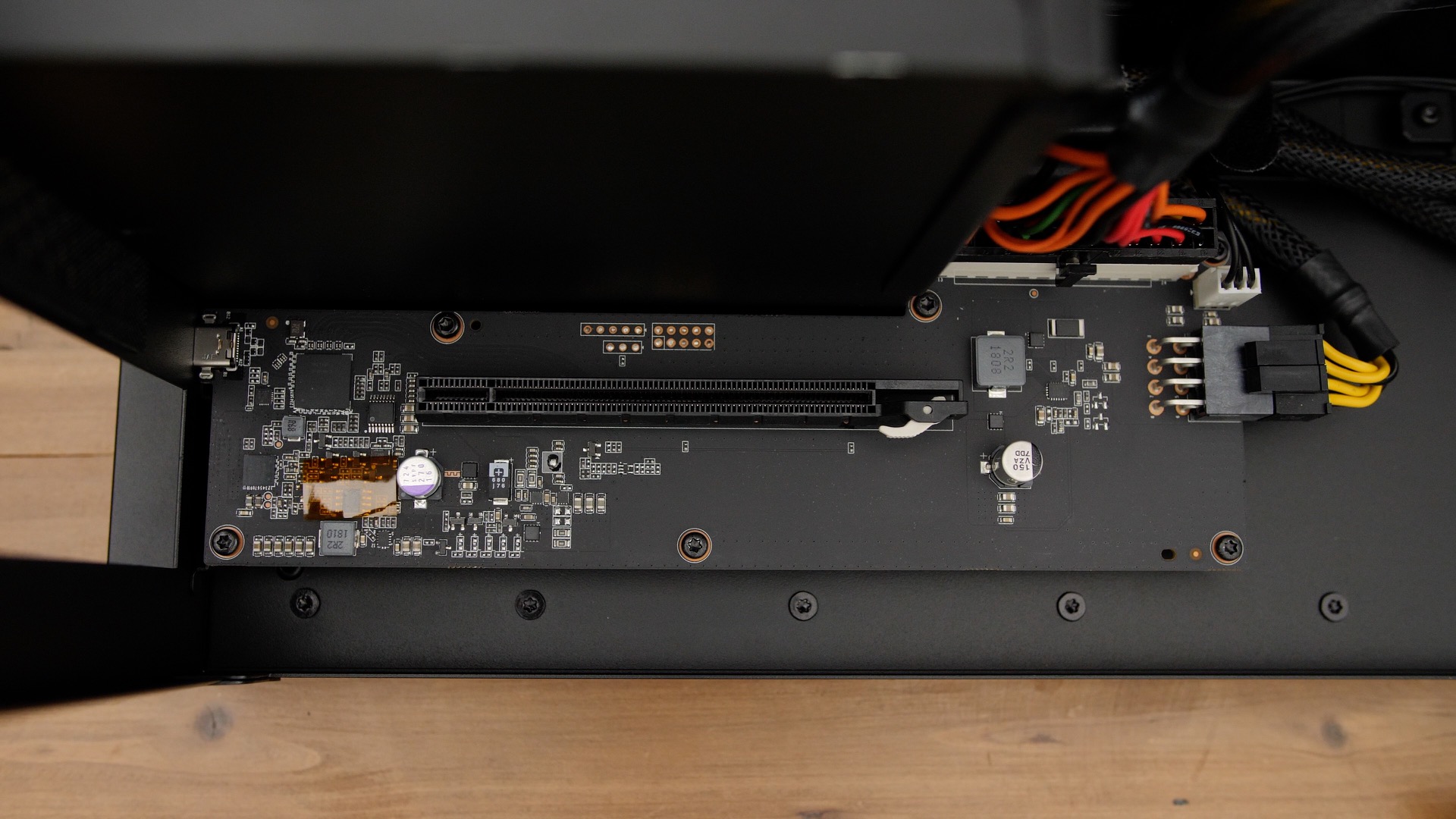

- #External gpu enclosure review drivers#
- #External gpu enclosure review windows 10#
- #External gpu enclosure review Pc#
- #External gpu enclosure review series#
It immediately recognized the device, but only saw it as a “Microsoft Basic Display Adapter” until I re-installed my existing 411.63 Quadro drivers and rebooted. I plugged the Thunderbolt connector into the laptop while it was booted. I installed my Quadro P6000 into the enclosure, because it used the same drivers as my internal Quadro P1000 GPU and would give me the most significant performance boost. Sonnet has a very thorough compatibility list available, for more specific details. This should cover any existing GPU on the market, and I have cards requiring nearly every possible combo - 6-pin, 8-pin, both, and dual 8-pin. The 550 model includes two PCIe power cables that can be used in 6- or 8-pin connectors.


The base 350 model should support GF1080 or 2080 cards, but not overclocked Titanium or Titan versions. They sent me the mid-level 550 model, which should support every card on the market, aside from AMD’s power-guzzling Vega 64-based GPUs. Sonnet has three different eGPU enclosure options, depending on the power requirements of your GPU. I have had the opportunity to review the 550W version of Sonnet’s Breakaway Box PCIe enclosure over the course of a few weeks, allowing me to test out a number of different cards, including four different GPUs, as well as my Red-Rocket-X and 10GbE cards. Now, its integrated Quadro P1000 is nothing to scoff at, but there was significantly more room for performance gains from an external GPU. So I hadn’t had the opportunity to give it a go until I received an HP Zbook Studio x360 to review. The last two systems I reviewed had Thunderbolt 3, but didn’t need eGPUs with their mobile Quadro P4000 and P5000 internal GPUs. This was just before Thunderbolt 3 hit the mainstream.
#External gpu enclosure review windows 10#
Integrated OS support for GPU switching in Windows 10 and OS X (built on laptop GPU power saving technology) further paved the path to eGPU adoption.Įven with all of this in my favor, I didn’t take the step into eGPU solutions until very recently. And far more systems support Thunderbolt 3 than the previous iterations. Thunderbolt 3 changed all of that, increasing the total connection bandwidth to 40Gb, the same as first-generation PCIe x16 cards.

#External gpu enclosure review Pc#
The biggest thing holding back eGPUs at that point was lack of PC adoption of the Apple technology licensed from Intel, and OS X limitations on eGPUs. The first generation offered a dedicated 10Gb connection, while Thunderbolt 2 increased that to a 20Gb shared connection.
#External gpu enclosure review series#
It allowed the ultra-light Z series laptop to use an AMD Radeon 6650M GPU and Blu-ray drive in the proprietary Media Dock, presumably over a PCIe x4 1.0 (8Gb/s) connection.Īlienware also has a propriety eGPU solution for their laptops, but Thunderbolt is really what makes eGPUs a marketable possibility, giving direct access to the PCIe bus at x4 speed, in a standardized connection. (3D gaming requires less source bandwidth than video processing.) Sony’s follow-on Z2 model offered the first commercial eGPU, connected via LightPeak, the forerunner to Thunderbolt. Other users were upgrading the GPU with an ExpressCard-based ViDock external PCIe enclosure, but a single-lane of PCIe 1.0 bandwidth (2Gb/s) wasn’t enough to make is worth the effort for video editing. It didn’t support my 30-inch display, and while the SSD storage solution had the throughput for 2K DPX playback, the GPU processing couldn’t keep up. Its GeForce 330M was powerful enough to run Adobe’s Mercury CUDA Playback engine in CS5, but was at the limit of its performance. The Vaio Z1 was one of the first hybrid graphics solutions to allow users to switch between different GPUs. This was followed by my current Aorus X3 Plus, which has both power (GF870M) and a small form factor (13 inch), but at the expense of everything else. I then bounced to the lightweight Carbon Fiber 13-inch Sony Vaio Z1 in 2010, which my wife still uses. That was followed by a Quadro-based Dell Precision M4400 workstation, which was on the larger side. After four years carrying that around, I was eager to move to the Dell XPS M1210, the smallest laptop with a discrete GPU. My first laptop when I graduated high school was the 16-inch Sony Vaio GRX570, with the largest screen available at the time, running 1600×1200 pixels. Systems are always too heavy or not powerful enough. And this usually bounces back and forth, as neither option is totally satisfactory. As a laptop user and fan of graphics performance, I have always had to weigh the balance between performance and portability when selecting a system.


 0 kommentar(er)
0 kommentar(er)
